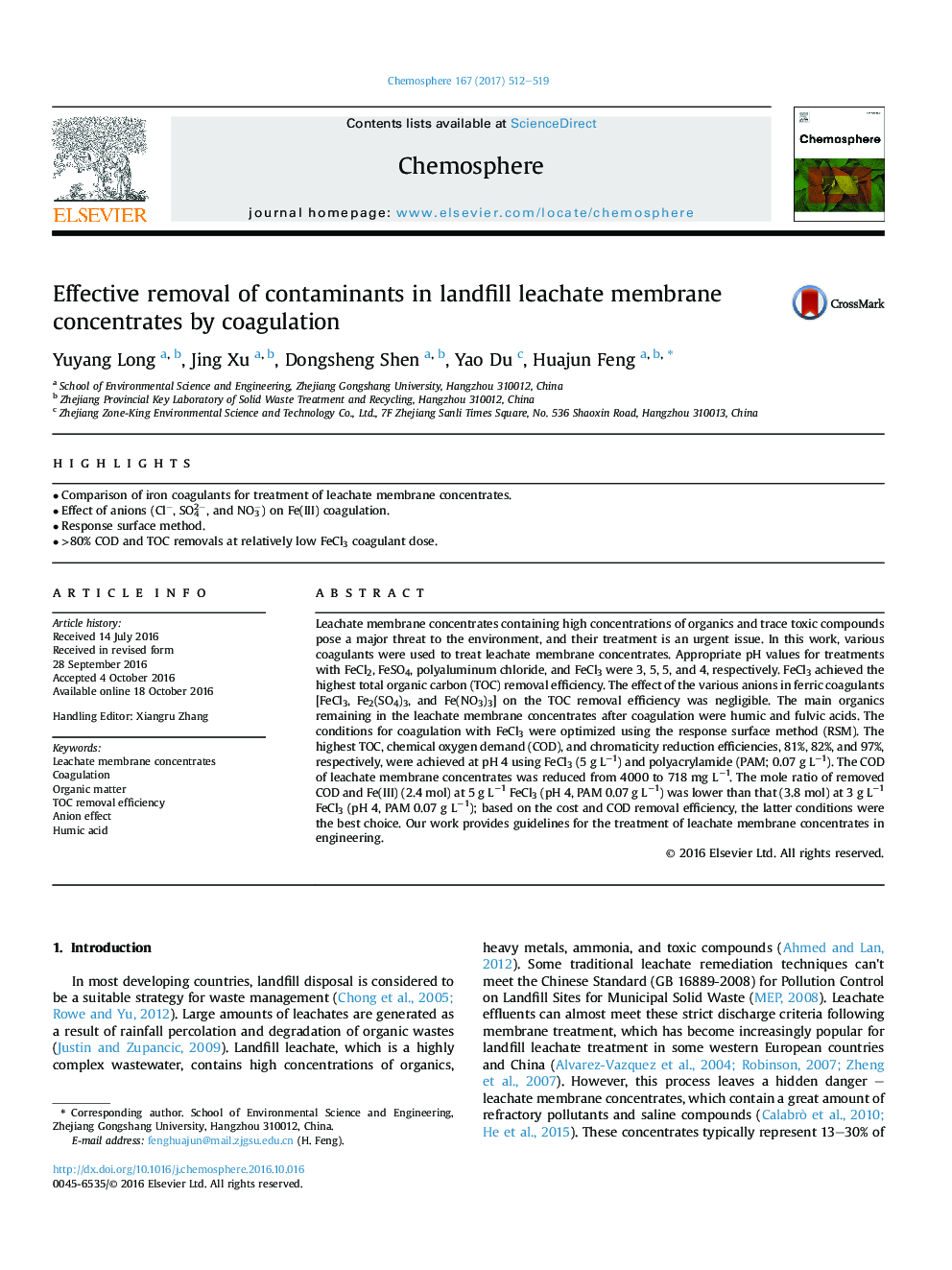| Article ID | Journal | Published Year | Pages | File Type |
|---|---|---|---|---|
| 6305995 | Chemosphere | 2017 | 8 Pages |
â¢Comparison of iron coagulants for treatment of leachate membrane concentrates.â¢Effect of anions (Clâ, SO42â, and NO3â) on Fe(III) coagulation.â¢Response surface method.â¢>80% COD and TOC removals at relatively low FeCl3 coagulant dose.
Leachate membrane concentrates containing high concentrations of organics and trace toxic compounds pose a major threat to the environment, and their treatment is an urgent issue. In this work, various coagulants were used to treat leachate membrane concentrates. Appropriate pH values for treatments with FeCl2, FeSO4, polyaluminum chloride, and FeCl3 were 3, 5, 5, and 4, respectively. FeCl3 achieved the highest total organic carbon (TOC) removal efficiency. The effect of the various anions in ferric coagulants [FeCl3, Fe2(SO4)3, and Fe(NO3)3] on the TOC removal efficiency was negligible. The main organics remaining in the leachate membrane concentrates after coagulation were humic and fulvic acids. The conditions for coagulation with FeCl3 were optimized using the response surface method (RSM). The highest TOC, chemical oxygen demand (COD), and chromaticity reduction efficiencies, 81%, 82%, and 97%, respectively, were achieved at pH 4 using FeCl3 (5 g Lâ1) and polyacrylamide (PAM; 0.07 g Lâ1). The COD of leachate membrane concentrates was reduced from 4000 to 718 mg Lâ1. The mole ratio of removed COD and Fe(III) (2.4 mol) at 5 g Lâ1 FeCl3 (pH 4, PAM 0.07 g Lâ1) was lower than that (3.8 mol) at 3 g Lâ1 FeCl3 (pH 4, PAM 0.07 g Lâ1); based on the cost and COD removal efficiency, the latter conditions were the best choice. Our work provides guidelines for the treatment of leachate membrane concentrates in engineering.
